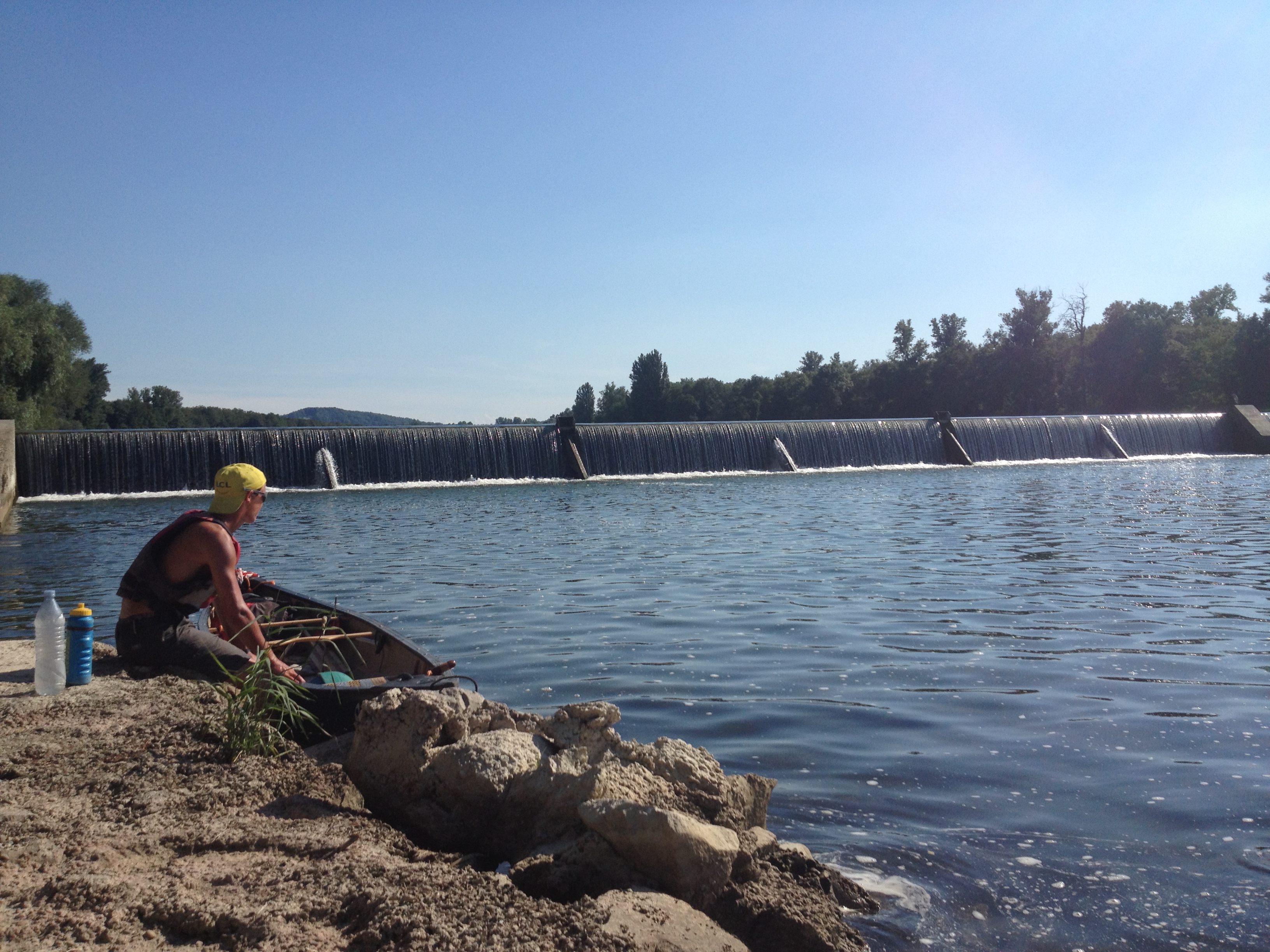The week started with our departure from the Rhone-Rhine Canal to join the River Rhine.
The Rhine is the river we’d heard a lot about before we left and have heard plenty more about since we’ve been travelling.
It’s a big, busy waterway and everyone wanted us to be informed that we’d be a little fish in one massive pond.
This aside, I’d done my research before the trip and knew that, though challenging, we could paddle the Rhine and it was a necessity in our route across the continent.
So this week, with well over 1000km now canoed, we were set to join the big river.
At the lock where the canal meets the river, however, a French official had other ideas. We were allowed no further.
The Rhine, he said, was not permitted for canoes, the river was dangerous and we were not allowed there.
This conversation continued in his office. Here we talked politely and made clear our intentions and the scale of our journey, stressing that we were experienced, planned canoeists, not two kids on a joy-ride.
Simply put, there wasn’t much he could do anyway; so he scanned our IDs, told us we couldn’t go on the Rhine and watched us leave in full knowledge we would shortly be back in the canoe.
300m later we were on the forbidden water and crossed to the other side.
The experience, however, left us on a low. Canoeing the Continent was not hastily planned and the route was well checked.
I had originally begun by looking at maps, making a potential route and then researching that route.
I then phoned and talked to the British Canoe Union to get information on the rivers; I even posted on international canoeing forums to chat to people across the continent.
I subsequently read countless blogs of people canoeing the Danube, canoeing the Rhine, canoeing the many rivers we’ll travel.
I have read documents on the different waterways, I have emailed canoe clubs and contacted directly people who had done large scale expeditions, I have found out what maps others had used, what were best and how to buy them. I did all of this and then we got to the Rhine to be told there was no canoe access.
The major feeling, then, at the start of last week, was one of embarrassment.
To get so far and to such a major point to be told, and I quote, “you cannot go here, you will surely die” was upsetting.
It’s no small river and I should have known it wasn’t accessible. It’s a central part of the route and would change the entire expedition.
So our first day was a blow: no access to the Rhine along with some other short stories such as Nathan getting lost in the woods and James breaking the canoe-wheels.
We camped that night in Germany on the banks of the Old River Rhine, which we had hiked to and were allowed on, feeling unsure of what would happen next.
The next day, having calmed down, we continued on the Old Rhine to a German rowing club just before the confluence with the Rhine.
Here we stopped, got out our maps and asked for help and information.
A friendly German woman gave us all the confirmation we needed.
She had rowed on the Rhine, seen people canoe on the Rhine, knew there were clubs on the Rhine, and was sure we could go on the Rhine.
It seemed, despite the Frenchman’s sure feeling of our impending deaths, it was only the small section of river of the previous day we had not been allowed on. The Rhine was still ours to be conquered.
And so that is what we set about our week doing.
Here we are in canoe country with a specific water-sports map and clear signs which tell us where there is a slipway out of the water.
With these handy markings we portage our canoe around the large hydro-electric dams and reload it with ease.
Since that first day things have gone smoothly and with Strasbourg as the planned destination our week is slightly shorter than usual so that our rest day coincides with a chance to see the city.
Here we are, still alive on one of Europe’s busiest rivers.
We’re certainly still a small fish on the big pond, but now we’re swimming along nicely just as we planned.
On the France-Germany border being planned, prepared and organised, so far our preparation’s looking just fine.
TIBS News will have our latest in another exclusive weekly report, while more regular updates are available @CanoeingEurope on Twitter and at www.canoeingthecontinent.com.



















